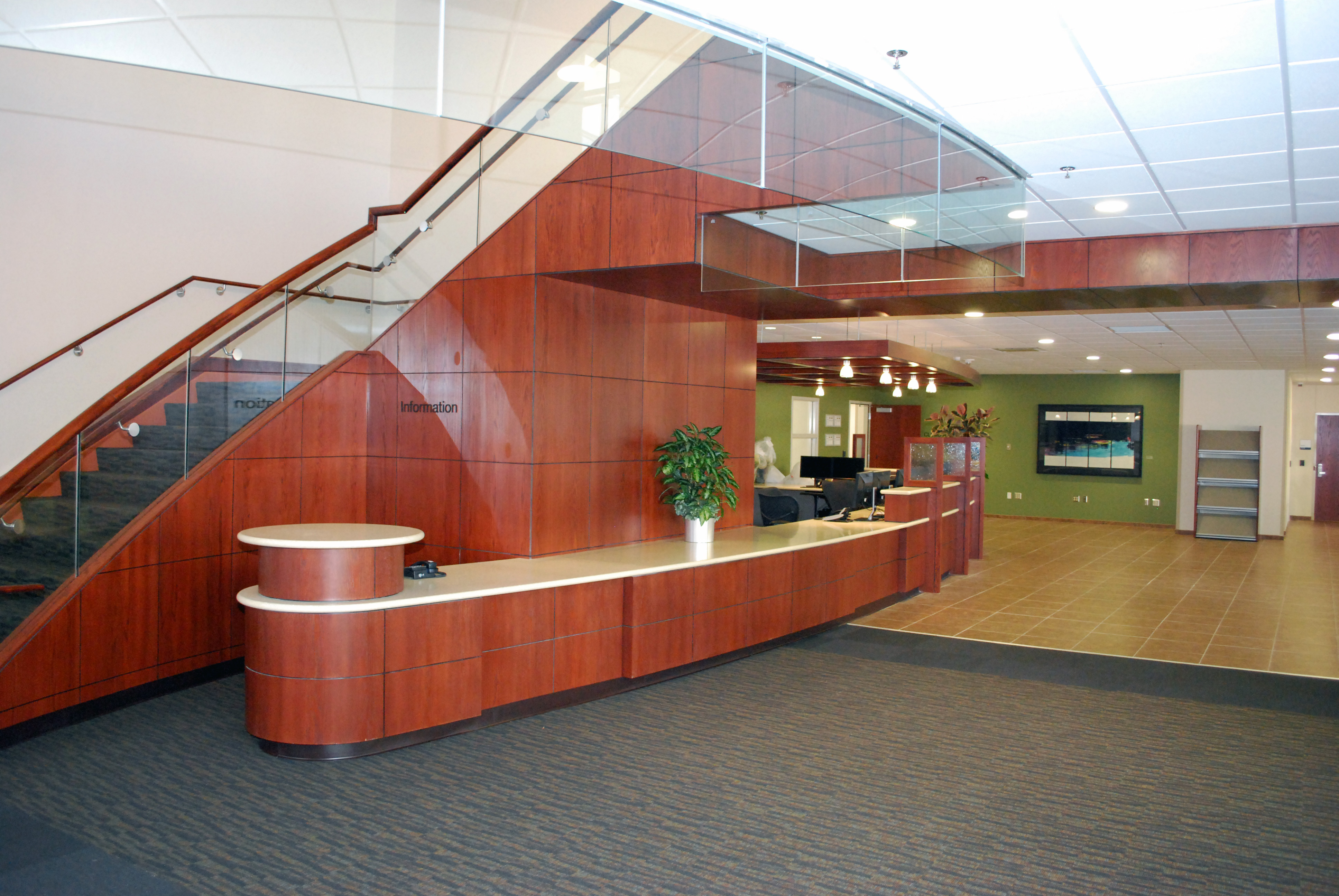The new Holden Cancer Center of University of Iowa Hospitals and Clinics recently held an open house attended by patients, staff and members of the public. The $12 million facility was designed by Heery International.
Totaling 64,000-sf of renovated space, the Holden Cancer Center is located on two floors in the Pomerantz Family Pavilion. It includes new clinic and infusion bay areas in a modern, patient-friendly environment, offering everything from chemotherapy to radiation and other treatments. The new cancer clinic provides a significant increase in patient space from the prior facility, which was located in an adjacent building. It features 37 exam rooms and two procedure rooms. The second-floor infusion suite grew from 28 chairs to 40, eight of which are in private rooms.
Many aspects of the center's design are aimed at enhancing efficiency and reducing patient waiting times. In particular, the centralized and team-specific staff workrooms are intended to improve patient tracking, and a new pneumatic tube system, which will deliver samples to the lab in two minutes rather than the 13 minutes for current delivery, reduces wait times for lab results. There also is an on-site pharmacy. The clinic also includes a larger and more centralized space for research, bringing together a core group of cancer center staff who work on clinical trials. The cancer center conducts nearly 300 clinical trials at any given time. BD+C
Related Stories
| Apr 5, 2011
Top 10 Buildings: Women in Architecture
Making selections of top buildings this week led to a surprising discovery about the representation of women in architecture, writes Tom Mallory, COO and co-founder, OpenBuildings.com. He discovered that finding female-created architecture, when excluding husband/wife teams, is extremely difficult and often the only work he came across was akin to interior design.
| Apr 5, 2011
What do Chengdu, Lagos, and Chicago have in common?
They’re all “world middleweight cities” that are likely to become regional megacities (10 million people) by 2025—along with Dongguan, Guangzhou, Hangzhou, Shenzhen, Tianjin, and Wuhan (China); Kinshasa (Democratic Republic of the Congo); Jakarta (Indonesia); Lahore (Pakistan); and Chennai (India), according to a new report from McKinsey Global Institute: “Urban World: Mapping the economic power of cities”.
| Mar 30, 2011
China's low-carbon future city
In 2005, the Chinese government announced its target to reduce energy consumption per GDP unit by 20% by the year 2010. After a multi-billion investment, that target has been reached. The Chinese Climate Protection Program’s goal to increase energy efficiency, develop renewable energies, and promote energy savings while reducing pollutant emissions and strengthening environmental protection is reflected in the “Future City” by SBA Design.
| Mar 30, 2011
Is the AEC industry at risk of losing its next generation leaders without better mentoring?
After two or three horrifying years for the AEC industry, we are finally seeing the makings of a turnaround. However, data developed by Kermit Baker as part of the AIA Work-on-the-Boards survey program indicates that between 17% and 22% of design firms are eliminating positions for interns and staff with less than six years of experience. This data suggests the industry is at risk of losing a large segment of its next generation of leaders if something isn't done to improve mentoring across the profession.
| Mar 29, 2011
City's design, transit system can ease gas costs
Some cities in the U.S. are better positioned to deal with rising gas prices than others because of their design and transit systems, according to CEOs for Cities, a Chicago-based nonprofit that works to build stronger cities. The key factor: whether residents have to drive everywhere, or have other options.
| Mar 29, 2011
Chicago’s Willis Tower to become a vertical solar farm
Chicago’s iconic Willis Tower (formerly the Sears Tower) is set to become a massive solar electric plant with the installation of a pilot solar electric glass project.










